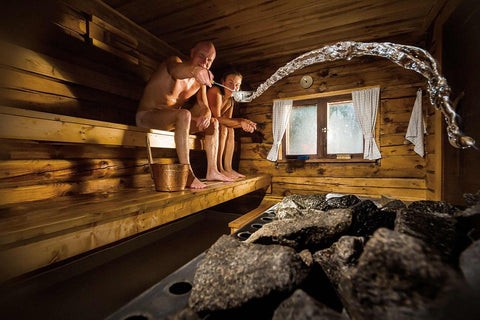10 Simple Techniques For Traditional Sauna
10 Simple Techniques For Traditional Sauna
Blog Article
The Main Principles Of Traditional Sauna
Table of ContentsAn Unbiased View of Traditional SaunaHow Traditional Sauna can Save You Time, Stress, and Money.An Unbiased View of Traditional SaunaSome Known Details About Traditional Sauna Some Known Details About Traditional Sauna
The majority of the weight shed in a sauna is water loss and is re-gained upon rehydrating. Without an uncertainty sauna can be an essential part of a healthy and balanced weight loss program. To check out the differences in between traditional and IR saunas, I will certainly divide these into proven, academic, and fabricated differences.Hence, the most popular point in the saunawhich is at the ceiling directly over the sauna heateris typically between 185 and 190 F. Claims that a traditional sauna exceeds 200 F is simply not real and not suitable for electric saunas marketed in the US. The temperature level for a far-infrared sauna is generally established between 120 and 140 F; nevertheless, unlike the standard sauna, the goal in and IR space is not to attain a high temperature.
Due to the fact that of this, the temperature level distinction is nearly pointless, given that excessive sweating leads to both sauna types, however the approach of warming the body is various. In an IR sauna the bather will really feel hot and will certainly sweat a lot, yet at a lot reduced temperature levels (Traditional Sauna). Therefore, if the objective is to invest longer time periods in the sauna, the IR sauna is an excellent option
When a typical sauna has actually been effectively warmed, the sauna wall surfaces are warm, the air temperature level has attained set temperature and the rocks are very warmed. As an intriguing side note, the heated walls and the rocks are producing far-infrared warmth, integrated with the heated air, to develop an "wrapping up heat".
Some Ideas on Traditional Sauna You Need To Know

When the heat is accomplished, the aspects cycle on and off to preserve the heat. Many conventional sauna individuals take pleasure in pouring water over the rocks to create steam to elevate sauna moisture levels. The benefits of putting water over the rocks include: making the room more comfy, dampening the nasal flows, and allowing the usage of aromatherapy by mixing crucial oils with the water.

When the power goes into the body, it creates the body temperature level to boost and inevitably causes perspiration. In an infrared sauna it is essential for the emitters/heaters to continue to be on virtually constantly. Because there is no mass of rocks to retain warmth, the sauna will cool if the emitters shut down.
As discussed over, the sauna bather in an infrared area intends to position himself before operating emitters to get maximum gain from the warm. The heating time for the 2 spaces can be extremely various, depending upon exactly how the areas are made use of. For a traditional sauna, a bather needs to allow 30-40 mins for the space to accomplish a desired temperature level and to properly pre-heat the rocks.
How Traditional Sauna can Save You Time, Stress, and Money.
A well built sauna will generally achieve a temperature of 150-160 F in about 30-40 minutes. For hotter temperatures, the area might require to warm for a longer period.

Conventional saunas tend to be bigger (for this reason utilize more electrical power) than infrared saunas, although typical saunas are certainly available in one and anchor 2 individual sizes. For a two-person typical sauna, 5x6 or 5x7 size is most prominent. The top bench can easily seat 2 or 3 individuals and is additionally enough time to rest throughout the sauna session.
An Unbiased View of Traditional Sauna
The ordinary cost per kWH of power in the united state is around $0.11, so a 4.5 kW heater will set you back approximately $.50 to compete one hour, if the heating system runs continually for one hour. Normally a sauna heating unit will certainly compete 75% of the first hour and 50% of subsequent hours on given that the aspects cycle once the set temperature level is accomplished.

There is a seldom reviewed distinction in the social experience between the 2 areas. While our society has shed several of the social benefit of the traditional sauna experience, it can be very socially gratifying (Traditional Sauna). From family time in the sauna, to heart-felt discussions with better halves, to sauna partiesthe standard sauna experience can result in intimate interacting socially
Fascination About Traditional Sauna
A lot of greater end infrared areas consist of colored light therapy, audio systems and full-glass fronts.
Report this page